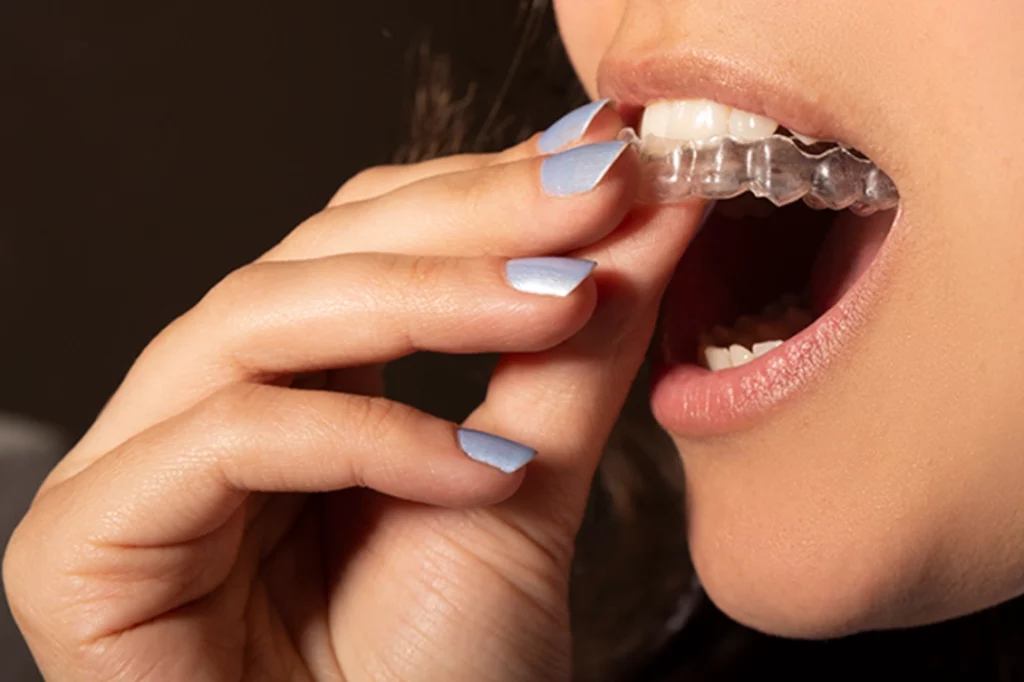As individuals seek alternatives to traditional braces, Invisalign has emerged as a popular option for achieving straighter teeth. But, have you ever wondered, “What is the failure rate of Invisalign?”
In this blog, we explore the factors that contribute to the failure of Invisalign treatment and provide insights into how patients can lower the risk and maximize the success of their orthodontic journey.
Invisalign Failure Rate
Several patients doubt the effectiveness of Invisalign. However, the success rate of Invisalign treatment is approximately 96%, indicating a failure rate of only 4%, or approximately 1 in every 25 patients.
Factors Influencing the Failure Rate of Invisalign:
Lack of Patient Compliance:
- Inconsistent wear of aligners can lead to treatment failure.
- Non-compliance with wearing aligners for the recommended time can result in suboptimal outcomes.
Complexity of Orthodontic Issues:
- Invisalign may not effectively address severe orthodontic issues.
- The severity of the patient’s condition can increase the risk of treatment failure.
Orthodontist Expertise:
- Inexperienced orthodontists may misdiagnose issues or create ineffective treatment plans.
- Lack of expertise can lead to subpar monitoring of progress and adjustments, increasing the risk of failure.
Patient’s Dental Health:
- Pre-existing dental issues like gum disease or tooth decay can undermine treatment effectiveness.
- Poor dental health may compromise the ability of Invisalign aligners to achieve desired results.

Lifestyle Factors:
- Habits such as smoking or consuming staining foods and beverages can affect treatment outcomes.
- Failure to adhere to recommended lifestyle modifications can hinder the success of Invisalign treatment.
Treatment Plan Adherence:
- Deviating from the prescribed treatment plan can result in treatment failure.
- Skipping appointments or not following adjustment schedules can impede progress and compromise results.
Biological Response to Treatment:
- Individual factors like bone density and tissue response can influence treatment outcomes.
- Patients may experience slower progress or unexpected challenges, impacting the overall success rate.
Understanding Success and Failure in Invisalign Treatment:
Success in Invisalign treatment is defined by achieving the desired teeth alignment and addressing orthodontic issues effectively. Conversely, failure may manifest as incomplete teeth straightening, relapse of alignment after treatment, or encountering unforeseen complications during the treatment process.
Despite its high success rate, Invisalign is not immune to challenges. Treatment failure may occur due to various reasons, including patient non-compliance, unexpected dental changes, or complications arising during treatment.
Mitigating Risks and Maximizing Success:
Despite Invisalign’s comparatively low failure rate, patients can take some precautions to reduce risks and increase their chances of success.
Selecting a Qualified Orthodontist:
- Choose an experienced orthodontist specializing in Invisalign treatment.
- A complete evaluation and personalized treatment plan are vital for success.
Adhering to Treatment Guidelines:
- Follow the orthodontist’s instructions diligently.
- Wear aligners as directed and attend scheduled appointments.
Maintaining Oral Hygiene:
- Practice good oral hygiene throughout treatment.
- Regular brushing, flossing, and dental check-ups help prevent complications.
Open Communication:
- Communicate openly with the orthodontist about any concerns or challenges.
- Timely feedback allows for adjustments and interventions as needed.
Lifestyle Modifications:
- Avoid habits or foods that can damage aligners.
- Smoking, chewing gum, and consuming staining beverages may affect treatment outcomes.
Commitment to Treatment:
- Stay committed to the treatment plan for the prescribed duration.
- Consistency and patience are key to achieving desired results.
Follow-Up and Monitoring:
- Regular follow-up visits allow the orthodontist to monitor progress.
- Adjustments can be made to ensure treatment stays on track for success.
Conclusion
Understanding “What is the failure rate of Invisalign?” is essential for patients considering orthodontic treatment. While Invisalign boasts a high success rate, the possibility of treatment failure or complications cannot be overlooked. By recognizing the factors influencing treatment outcomes, mitigating risks, and fostering realistic expectations, patients can embark on their Invisalign journey confidently and clearly. With proper care, adherence to treatment protocols, and guidance from qualified professionals, Invisalign can be a transformative solution for achieving a straighter, healthier smile.
Are you considering Invisalign treatment to transform your smile? Don’t hesitate to take the next step towards a brighter, healthier smile. Contact Palisades Dental Care in Dumont, NJ, today to book your appointment online. New patients can call us at (201) 279-0440 while existing patients can reach us at (201) 568-9811. Our experienced team is here to guide you through your orthodontic journey and help you get the smile you’ve always wanted.
FAQ
What happens if Invisalign treatment fails?
If Invisalign treatment does not achieve the desired results, your orthodontist may recommend alternative treatments, such as traditional braces or additional orthodontic procedures, to address the remaining issues.
Is there a warranty or guarantee for Invisalign treatment?
Invisalign treatment does not typically come with a warranty or guarantee of success. However, patients should discuss any concerns about treatment outcomes with their orthodontist to address them appropriately.
Can Invisalign treatment failure be prevented with proper maintenance and care of aligners?
Proper maintenance and care of Invisalign aligners are crucial for treatment success. Patients should follow recommended cleaning and storage practices to prevent damage to aligners and ensure optimal treatment outcomes.


